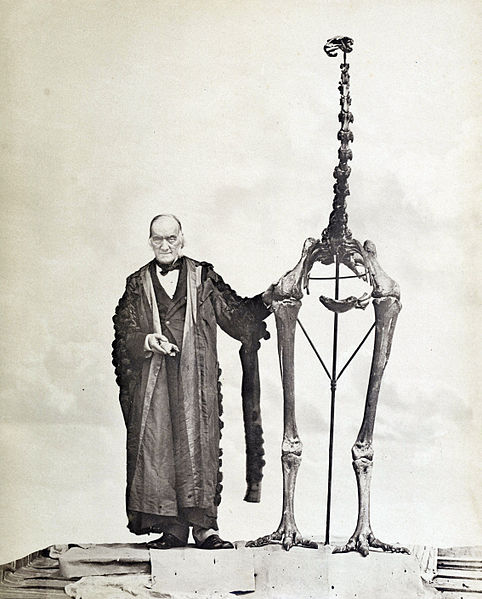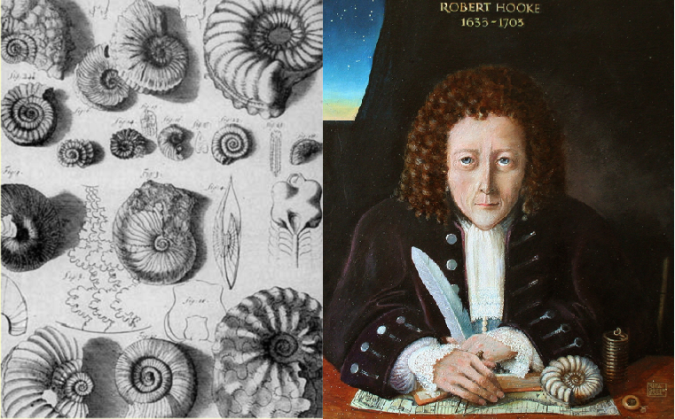
Woolly mammoths in a late Pleistocene landscape in northern Spain (Author: Mauricio Antón) From Wikipedia Commons
At the beginning of the nineteenth century George Cuvier, the great French anatomist and paleontologist, suggested that periodic “revolutions”, or catastrophes had befallen the Earth and wiped out a number of species, but under the influence of Lyell’s uniformitarianism, Cuvier’s ideas were rejected as “poor science”. One century after Cuvier definition of catastrophism, Chamberlain proposed that faunal major changes through time were under the control of epeirogenic movement of the continents and ocean basins. Despite Chamberlain’s article, the modern study of mass extinction did not begin until the middle of the twentieth century with a series of papers focused on the Permian extinction. One of the most popular of that time was “Revolutions in the history of life” written by Norman Newell in 1967.
Mass extinctions had shaped the global diversity of our planet several times during the geological ages. They are major patterns in macroevolution. Andrew Knoll defines them as perturbations of the biosphere which seem instantaneous when it is observed through the geological record.
In 1982, Jack Sepkoski and David M. Raup identified five mass extinctions. The first took place at the end of the Ordovician period, about 450 million years ago. Now, according to the current rates of extinction, we are in the midst of the so called “Sixth Mass Extinction”.
Mass extinctions are probably due to a set of different possible causes like basaltic super-eruptions, impacts of asteroids, global climate changes, or continental drift. But now, a group of scientists like Edward O. Wilson and Niles Eldredge identified post-industrial humans as the driving force behind the current and on-going mass extinction (Braje, 2013).
The human arrival was a “key component” in the extinction of the megafauna during the late Quaternary. In North America, approximately 34 genera (72%) of large mammals went extinct between 13,000 and 10,500 years ago, including mammoths, mastodons, giant ground sloths, horses, tapirs, camels, bears, saber-tooth cats, and a variety of other animals. South America lost an even larger number and percentage, with 50 megafauna genera (83%) becoming extinct at about the same time.

Richard Owen stands next to the largest of all moa, Dinornis maximus (now D. novaezealandiae). From Wikimedia Commons.
Other extinctions on island ecosystems around the world are result from direct human hunting, anthropogenic burning and landscape clearing, and the translocation of new plants and animals. One of the most famous and well-documented of these extinctions come from Madagascar. Pygmy hippos, giant tortoises, and large lemurs went extinct due to human hunting or habitat disturbance. A very interesting study by Burney et al. (2003) tracked the decline of coprophilous Sporormiella fungus spores in sediments due to reduced megafaunal densities after the human arrival on the island. Another well documented case is the Moa extinction in New Zealand. Recent radiocarbon dating and population modeling suggests that their disappearance occurred within 100 years of first human arrival. A large number of landbirds across Oceania suffered a similar fate beginning about 3500 years ago.
The anthropogenic effects increasingly took precedence over natural climate change as the driving forces behind plant and animal extinctions with the advent of agriculture and the domestication of animals.
Amphibians offer an important signal to the health of biodiversity; when they are stressed and struggling, biodiversity may be under pressure. Today, they are the world’s most endangered class of animal, while corals have had a dramatic increase in risk of extinction in recent years. Some biologist predict that the sixth extinction may result in a 50% loss of the plants and animals on our planet by AD 2100, which would cause not only the collapse of ecosystems but also the loss of food economies, and medicinal resources.
The acceleration of extinctions over the past 50,000 years, in which humans have played an increasingly important role, has left a number of hard questions about how the Anthropocene should be defined and whether or not extinctions should contribute to this definition (Erlandson, 2013)
References:
T.J., Erlandson, J.M., Human acceleration of animal and plant extinctions: A Late Pleistocene, Holocene, and Anthropocene continuum. Anthropocene (2013)
A.D. Barnosky, N. Matzke, S. Tomiya, G.O.U. Wogan, B. Swartz, T.B. Quental, C. Marshall, J.L. McGuire, E.L. Lindsey, K.C. Maguire, B. Mersey, E.A. Ferrer, Has the earth’s sixth mass extinction already arrived?, Nature, 471 (2011), pp. 51–57.
Mayhew, Peter J.; Gareth B. Jenkins, Timothy G. Benton (January 7, 2008). “A long-term association between global temperature and biodiversity, origination and extinction in the fossil record”. Proceedings of the Royal Society B: Biological Sciences 275 (1630): 47–53.
D.A. Burney, L.P. Burney, L.R. Godfrey, W.L. Jungers, S.M. Goodman, H.T. Wright, A.J.T. Jull, A chronology for late prehistoric Madagascar, J. Hum. Evol., 47 (2004), pp. 25–63









